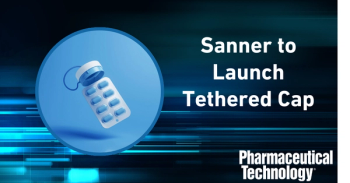
- Pharmaceutical Technology-09-02-2007
- Volume 31
- Issue 9
CMOs Join Pharma Facility Swap Meet
Contract manufacturers slim down to improve profitability.
Forced into a corner by lagging product development, patent expirations, and insurers unwilling to pay the price of new drugs, major pharmaceutical companies have undertaken a wave of restructuring efforts designed to improve their efficiency and bolster profitability. One of the most tangible components of those restructuring efforts has been the divestiture or closure of underused manufacturing facilities. According to William Wiederseim, founder and president of
Jim Miller
In the recent past, facility divestitures by major pharmaceutical companies have driven the growth of the contract manufacturing industry. Most contract manufacturing organizations (CMOs) got their start or built their networks by buying redundant Big Pharma facilities, especially in Europe and Canada. Buying existing facilities provided low-cost capacity (because facilities could be acquired at a fraction of their replacement value) and immediate revenues from contracts to continue producing products made at the acquired facilities. Examples of CMOs that entered the industry or grew their capacity through facility acquisitions include
In an interesting reversal of the past trend, CMOs are now joining the list of sellers. Earlier this year,
Like their Big Pharma brethren, the two CMOs turned to selling their operations as a means of improving financial performance by getting rid of underperforming assets. Patheon's OTC business, run largely from the Burlington and Fort Erie sites, has experienced declining revenues and profits for several years. The operations are still profitable, but the company's executives and new private-equity investors see no place for them in their ongoing restructuring efforts. Catalent's Albuquerque facility, which was once owned by Pharmacia, has been plagued by operating and regulatory problems despite substantial investment during the past five years.
Table A: Recent facility sales
A tough sell?
Despite the rapidly increasing inventory of pharma assets that are for sale, Wiederseim of PharmaBioSource predicts that both the Patheon and Catalent operations are likely to find buyers. He notes that the Patheon facilities have contracts, which will give a buyer an immediate revenue stream.
In Albuquerque, injectables manufacturing operations may prove to be attractive because injectables capacity is much sought after, driven by new biologics in the pipeline and a growing number of injectable generic and branded generic products coming to market. There were about seven injectables facilities on the market in the United States, according to Wiederseim, but several were sold in recent months.
According to Wiederseim, specialized capabilities are central to successfully selling a facility in today's market. Biologics and injectables manufacturing facilities are in great demand, he says, as are pharmaceutical-chemical manufacturing facilities with high-containment capabilities. Deals that include products (as does the JHP deal) or manufacturing contracts also have a greater chance of success.
Small-molecule active pharmaceutical ingredient (API) facilities are proving to be especially difficult to sell, except for those with high-containment capabilities. Wiederseim estimates that there are more than 500,000 gall. of chemical API capacity for sale in North America and nearly 1 million gall. worldwide.
Several factors are driving the sell-off of pharmaceutical chemical facilities, including the decline of legacy products, the shift of production to tax-favored countries such as Ireland and Singapore (at the expense of other European countries and Puerto Rico), and the increase in sourcing from India and China. Also, the trend toward high-potency APIs means that companies need far less production capacity for a given volume of finished-product sales.
Wiederseim says that there are far more sellers than buyers of pharmaceutical facilities, so the market is likely to remain weak. One of the best options for pharmaceutical companies seeking to sell properties is to find a buyer interested in converting the site to another use besides developing or manufacturing pharmaceuticals.
Some recent examples include Pfizer's (New York) manufacturing facility in Augusta, Georgia, which has been converted into an ethanol plant;
While CMOs have been eager buyers of pharmaceutical facilities in the past, we expect few, if any, of them to be buyers today. Ten years of experience in tinkering with their business model has taught CMOs several valuable lessons about the dangers of facility acquisitions, among them:
1. Having a few highly-used facilities is more likely to lead to success than having a lot of half-used facilities, no matter how cheaply they can be bought
2. In an industry where the cycle for negotiating a contract and starting production is three years or more, a 3–5 year contract for legacy products isn't really much of a head start
3. Borrowing money to buy facilities can lead to disastrous results [just ask
Reflecting these lessons, CMOs have shown strong discipline of late. For instance, we know a number of CMOs would love to have an injectables manufacturing facility in North America, but none have taken a serious run at any of the facilities on the market. They aren't willing to inherit the problems of some of these facilities, and aren't ready to pay a steep price for the newer sites.
Jim Miller is president of PharmSource Information Services, Inc., and publisher of Bio/Pharmaceutical Outsourcing Report, tel. 703.383.4903, fax 703.383.4905,
Articles in this issue
over 18 years ago
Advances in Asymmetric Synthesisover 18 years ago
A Call for FDA Inspectionsover 18 years ago
Supplements to the PQRI Workshop Resultsover 18 years ago
How to Gain Approval Overseasover 18 years ago
Pharma Capsulesover 18 years ago
Printing Digital Labelsover 18 years ago
Enhancing Drug Safetyover 18 years ago
The Challenges and Opportunities in ICH Q10over 18 years ago
Case StudiesNewsletter
Get the essential updates shaping the future of pharma manufacturing and compliance—subscribe today to Pharmaceutical Technology and never miss a breakthrough.





